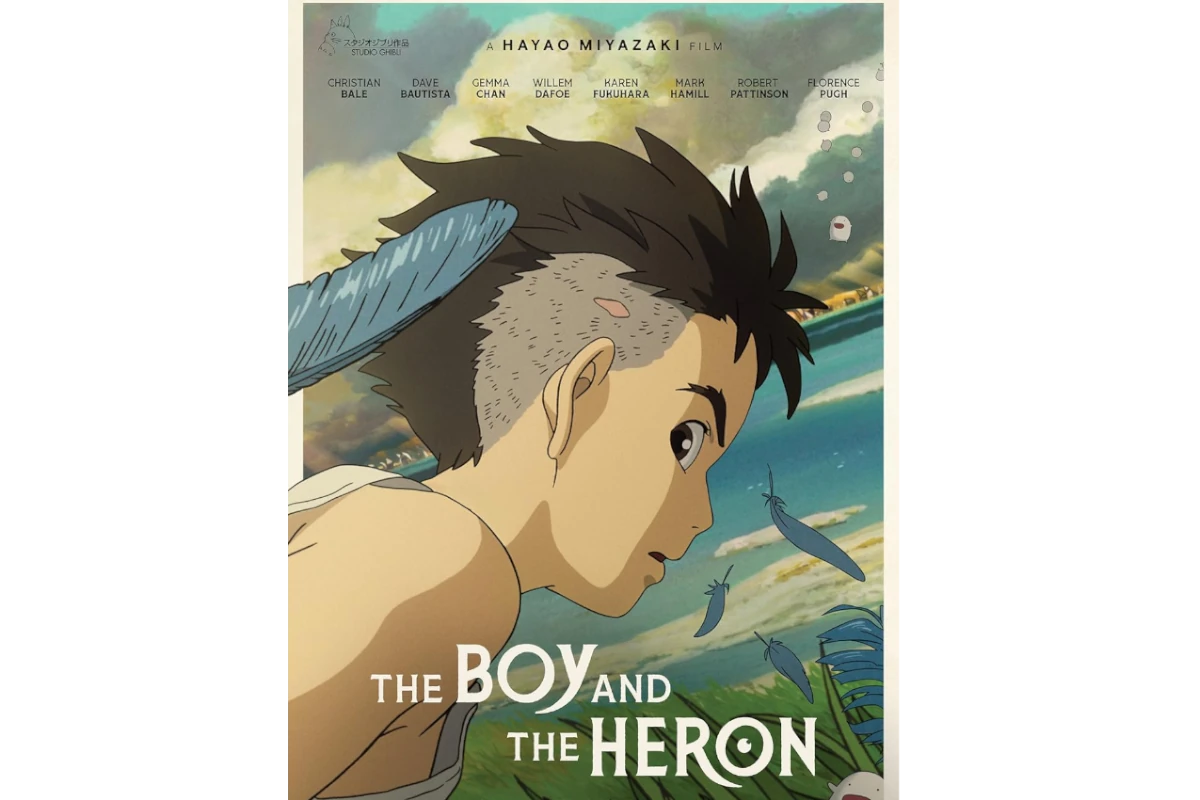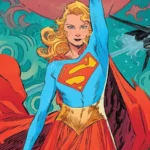The Boy and the Heron is a new animated film by Hayao Miyazaki. It tells the story of Mahito, a young boy who deals with loss and change. The movie uses fantasy and magic to explore deep themes like grief and growing up.
Mahito meets a talking heron that leads him to a strange world. There he finds creatures and people linked to his past. The film shows how Mahito copes with hard times through imagination.
Many fans want to know what the movie means. Its dream-like story can be hard to follow. But the film is really about facing life’s changes. It shows how we can find hope even when things are tough.

Unraveling the Enigma: A Look at The Boy and the Heron
“The Boy and the Heron” is a film that invites contemplation and personal interpretation. It’s a poignant exploration of grief, self-discovery, and the power of imagination, wrapped in a visually stunning package. Miyazaki’s latest masterpiece is a testament to his enduring artistry and his ability to create films that resonate with audiences of all ages.
Released in Japan as “How Do You Live?” with minimal promotion and no trailers, it has captivated audiences with its enigmatic narrative and stunning visuals. Let’s explore the key themes and interpretations of this captivating animated masterpiece.
A Journey of Grief and Self-Discovery
At its core, “The Boy and the Heron” is a coming-of-age story about Mahito, a young boy grappling with the loss of his mother during World War II. Evacuated to the countryside, Mahito navigates a new environment, a new family, and the complexities of his own emotions. His journey is one of grief, self-discovery, and acceptance, as he learns to cope with loss and find his place in a world turned upside down.
A World of Symbolism and Fantasy
Miyazaki weaves a rich tapestry of symbolism and fantasy throughout the film. Mahito encounters a talking heron, a mysterious tower, and a fantastical world filled with strange creatures and hidden meanings. These elements invite viewers to interpret the film’s deeper messages about life, death, and the power of imagination.
Themes and Interpretations
The film explores several profound themes:
- Grief and Loss: Mahito’s journey reflects the complexities of grief and the process of healing.
- Coming-of-Age: The film captures the challenges and triumphs of adolescence, as Mahito navigates identity and self-discovery.
- Anti-War Sentiment: Set against the backdrop of World War II, the film subtly conveys an anti-war message and the impact of conflict on individuals and society.
- Environmentalism: The film’s fantastical world emphasizes the interconnectedness of nature and humanity, subtly promoting environmental awareness.
Interpretations of the film’s symbolism vary. The heron could represent a guide, a spiritual figure, or Mahito’s own subconscious. The tower and the fantastical world might symbolize Mahito’s inner struggles, his imagination, or the afterlife. Miyazaki leaves room for individual interpretation, encouraging viewers to engage with the film’s deeper meanings.
A Visual Masterpiece
Studio Ghibli’s animation is renowned for its beauty and artistry, and “The Boy and the Heron” is no exception. The film’s visuals are breathtaking, with lush landscapes, detailed character designs, and imaginative creatures. Miyazaki’s signature style blends realism and fantasy, creating a visually captivating experience that complements the film’s narrative depth.
Key Elements at a Glance
| Element | Description |
|---|---|
| Director | Hayao Miyazaki |
| Studio | Studio Ghibli |
| Themes | Grief, coming-of-age, anti-war, environmentalism |
| Symbolism | Talking heron, mysterious tower, fantastical world |
| Visuals | Studio Ghibli’s signature animation style |
Key Takeaways
- The film uses fantasy to explore grief and growing up
- The magical world helps Mahito deal with loss
- The story shows how to find hope during hard times
Narrative Themes and Symbolism
The Boy and the Heron explores deep ideas through its story and symbols. It looks at loss, change, and how real life mixes with fantasy.
Explorations of Grief and Loss
The movie starts with a boy losing his mom. This sad event shapes the whole story. The boy feels lonely and scared. He doesn’t know how to deal with his feelings.
As he goes on his journey, he learns to face his pain. He meets odd creatures that help him understand his grief. The talking heron plays a big part in this. It guides the boy through a strange world.
This world is full of odd things that stand for his feelings. By the end, the boy starts to heal. He learns that it’s okay to miss his mom, but life goes on too.
Self-Discovery in the Face of Change
The main character grows a lot during the film. At first, he’s upset by all the changes in his life. But as he explores the magic world, he learns more about himself.
He faces hard choices and tests. These help him become braver and smarter. He starts to see that change can be good, not just scary.
The scar he gets is a sign of how he’s changing. It shows he’s growing up and getting stronger. By the end, he’s not the same scared kid he was at the start.
Intersections of the Natural and Supernatural
The Boy and the Heron mixes real life with magic in cool ways. The normal world and the fantasy world aren’t totally separate. They blend together.
In the magic world, nature acts in weird ways. Animals talk and strange things happen. But these odd events help explain real-life issues.
The heron itself is a good example. It’s a normal bird, but it can talk and knows special things. This mix of real and unreal helps tell the story in a unique way. It makes big ideas easier to grasp.
Cultural and Historical Context
The Boy and the Heron draws from Japan’s rich past and Studio Ghibli’s legacy. It blends myths and war memories with the studio’s unique style.
Influences from Japanese History and Mythology
The film taps into Japan’s cultural heritage. It uses the grey heron, a bird linked to melancholy in Japanese folklore. This choice adds depth to the story’s themes of loss and change.
World War II shapes the movie’s backdrop. The Pacific War’s impact on families echoes in the main character’s journey. Miyazaki often includes war themes in his works, reflecting Japan’s complex history.
Japanese myths play a big role too. The mysterious world Mahito enters has roots in old stories. This blend of history and fantasy is a Studio Ghibli trademark.
Studio Ghibli’s Evolution and Influence
Studio Ghibli has changed animation since its start. Their films like My Neighbor Totoro and Spirited Away are known worldwide. The Boy and the Heron continues this tradition of mixing art and storytelling.
The studio’s style has grown over time. They keep using hand-drawn art in a world of computer animation. This choice helps their films stand out.
Hayao Miyazaki’s work often looks at family and nature. The Boy and the Heron follows this pattern. It shows how Studio Ghibli keeps its core themes while trying new ideas.
The film is seen as Miyazaki’s message to future generations. It marks another step in the studio’s growth and its impact on global cinema.
Frequently Asked Questions
“The Boy and the Heron” has sparked many questions among viewers. Here are some common queries about the film’s meaning and symbolism.
Can you interpret the ending of ‘The Boy and the Heron’?
The ending shows Mahito returning to the real world. He chooses to live in the present rather than escape to a fantasy realm. This reflects Miyazaki’s message to his grandson about facing life’s challenges.
Mahito’s decision to stay with his family suggests growth and acceptance. It marks the end of his grief journey.
What is the symbolic significance of the characters in ‘The Boy and the Heron’?
Each character represents different aspects of life and growth. The heron acts as a guide for Mahito. It may be a Yōkai, a magical creature from Japanese folklore.
Mahito’s grand uncle symbolizes the past and legacy. Other characters reflect various emotions and life stages Mahito encounters.
What controversies surround ‘The Boy and the Heron’?
The film’s marketing strategy was unusual. It had no trailers or promotional materials before release. This choice sparked debate about film promotion methods.
Some viewers found the plot confusing. The mix of reality and fantasy led to different interpretations.
How does Hayao Miyazaki’s explanation clarify ‘The Boy and the Heron’?
Miyazaki has not given a detailed explanation of the film. He prefers viewers to form their own interpretations. His producer stated the film is a message to Miyazaki’s grandson.
This insight helps frame the movie as a personal legacy piece. It adds depth to the themes of growth and generational wisdom.
Who represents the Heron in ‘The Boy and the Heron’?
The heron is a complex figure. It serves as Mahito’s guide through the magical world. Some see it as a representation of Mahito’s lost mother.
Others view the heron as a symbol of change or a bridge between worlds. Its true nature remains open to interpretation.
What is the central message conveyed in ‘The Boy and the Heron’?
The film focuses on dealing with loss and change. It encourages viewers to face reality rather than escape it.
The story also touches on the impact of war and the importance of creating a better world for future generations.






